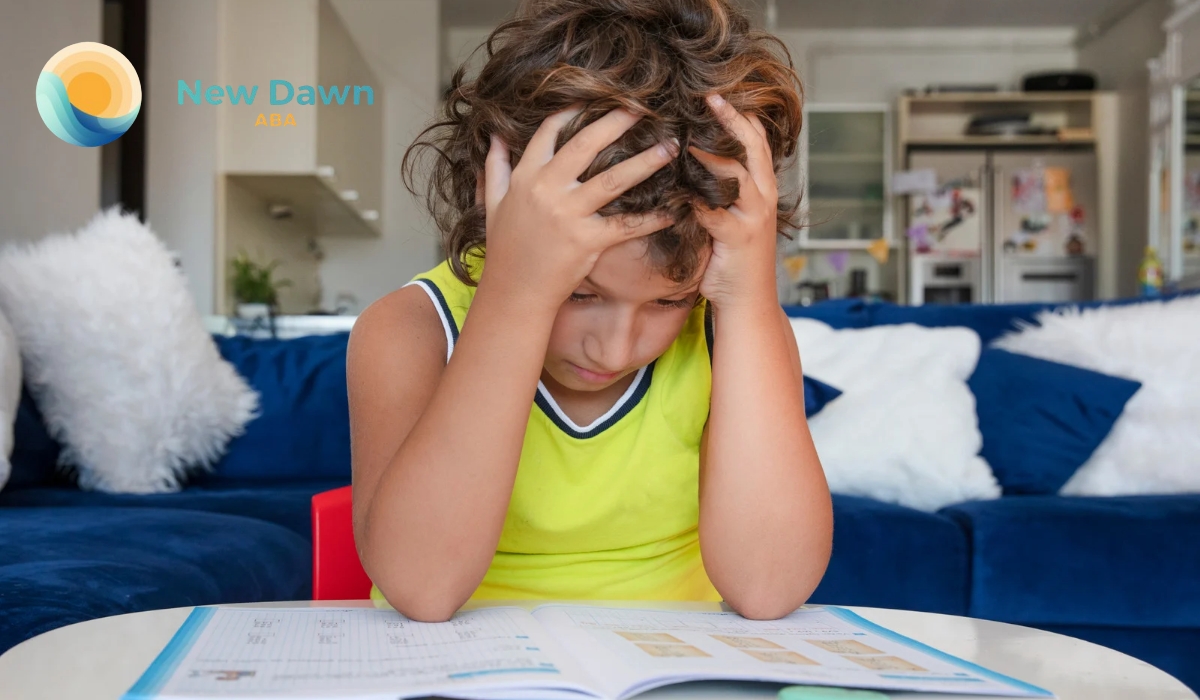Key Points:
- Autism Spectrum Disorder (ASD) and learning disabilities are distinct conditions, though they can co-occur in some individuals.
- The question "Is ASD a learning disability?" is common, but the answer lies in understanding how autism affects communication, behavior, and social interaction rather than learning processes alone.
- Recognizing the differences is crucial for getting the right support, including individualized interventions like ABA therapy.
When a child begins to show signs of developmental delays—struggles with communication, trouble following instructions, or difficulty making friends—parents naturally seek answers. Along the way, two terms often emerge: autism and learning disability. It’s easy to confuse the two, especially since they can look similar at first glance. However, understanding the difference is critical when it comes to choosing the right support and therapies.
One question that comes up often is, “Is ASD a learning disability?” For many parents, educators, and even professionals, this can be a point of confusion. Clarifying this distinction can help families advocate more effectively and better understand their child’s unique needs.
Is ASD A Learning Disability?
No, Autism Spectrum Disorder (ASD) is not classified as a learning disability. However, individuals with autism can also have learning disabilities, and the two may overlap. That overlap sometimes leads to the mistaken belief that they are the same.
To answer the question “Is ASD a learning disability?” clearly: ASD affects how a person communicates, interacts socially, and behaves. Learning disabilities, on the other hand, affect the way a person processes information and learns academic skills like reading, writing, or math. Understanding these differences helps parents pursue accurate diagnoses and appropriate support for their child’s development and education.
What is Autism Spectrum Disorder?
Autism Spectrum Disorder is a neurodevelopmental condition that affects how a person perceives the world and interacts with others. It's called a "spectrum" because the symptoms and severity can vary widely between individuals.
Autistic individuals may show a wide range of behaviors, but some hallmark signs include:
- Difficulty with verbal and non-verbal communication
- Struggles in forming and maintaining social relationships
- Repetitive behaviors or restricted interests
- Sensory sensitivities (e.g., aversion to loud sounds or bright lights)
- A preference for routines and predictability
Some autistic individuals may have exceptional skills in certain areas, such as music, math, or memory, even while facing challenges in others.
Cognitive Profile in ASD
While many people ask, “Is ASD a learning disability?” it's important to note that autism does not inherently impact intelligence. Some individuals with autism may have intellectual disabilities, but others may have average or above-average intelligence.
What autism often affects is how a child learns, not whether they are capable of learning. For example, a child might excel at visual learning but struggle with verbal instruction.

What is a Learning Disability?
A learning disability is a neurological disorder that interferes with the brain's ability to receive, process, store, or respond to information. These challenges are typically more specific than the broader scope of autism.
Types of Learning Disabilities:
Here are some of the most common types of learning disabilities:
- Dyslexia – affects reading and language-based processing skills
- Dyscalculia – impacts understanding of numbers and math concepts
- Dysgraphia – interferes with handwriting and fine motor skills related to writing
- Auditory Processing Disorder – affects the ability to interpret auditory information
- Nonverbal Learning Disabilities – often associated with visual-spatial, motor, and social skills issues
Children with learning disabilities may have trouble with schoolwork but typically do not show the broader social or behavioral symptoms seen in autism.
Intelligence and Learning Disabilities
Unlike intellectual disabilities, most children with learning disabilities have average or above-average intelligence. Their difficulty lies in specific academic tasks, not in overall cognitive ability.
Autism and Learning Disabilities: Key Differences
Understanding the distinction between ASD and learning disabilities can be made clearer by looking at how each affects different aspects of development.
Social Interaction
In terms of social interaction, individuals with autism often face significant challenges. These may include difficulty interpreting social cues, making eye contact, or forming peer relationships. In contrast, individuals with learning disabilities typically do not experience major social delays, unless these arise as a secondary response to ongoing frustration or reduced self-esteem related to academic struggles.
Communication
When it comes to communication, autism is frequently associated with delayed speech, a limited interest in verbal interactions, or difficulty grasping the subtleties and nuances of language. On the other hand, a person with a learning disability may have relatively typical speech and language development, although they may fall behind in specific academic areas like reading or writing.
Behavior and Repetition
Regarding behavior and repetition, children with autism often engage in repetitive behaviors such as hand-flapping, rocking, or lining up objects. They may also show intense focus or attachment to specific interests. These behaviors are usually not present in individuals with learning disabilities unless such behaviors emerge as coping strategies in response to academic-related stress.
Learning Profile
Looking at the learning profile, autism is often characterized by a highly individualized learning style. A child with ASD might excel in one domain while facing challenges in another, making their educational needs quite varied. In contrast, a learning disability generally affects a specific academic area, such as math, reading, or writing, while other areas of learning may remain unaffected.
Can Autism and Learning Disabilities Co-Occur?
Yes, and this is where things often get complicated. A child can be diagnosed with both autism and a learning disability. For example, a child on the spectrum may also have dyslexia, making reading and social communication both difficult.
When dual diagnoses are present, a coordinated approach to therapy and education is essential. This helps ensure the child is supported both in how they learn and how they interact with the world around them.
Why Proper Diagnosis Matters
Receiving an accurate diagnosis—whether it’s autism, a learning disability, or both—is crucial because it guides the type of support and therapies that are most effective. Mislabeling a child can lead to frustration, inappropriate interventions, and delayed progress.
Here are some reasons why this matters:
- Tailored Education Plans: Understanding the root of your child’s struggles allows schools to provide the right accommodations.
- Effective Therapy: Interventions like ABA therapy are designed specifically for autism, while learning disabilities may require educational specialists.
- Emotional Support: Knowing what a child is facing helps parents, teachers, and therapists provide appropriate encouragement and expectations.
What Parents Can Do
If you’re unsure whether your child is showing signs of autism, a learning disability, or both, start by observing their behavior across settings. Early signs of ASD or learning issues may emerge at home, in school, or during social interactions.
Here are the steps to take:
- Consult with your pediatrician for an initial evaluation.
- Seek assessments from specialists such as child psychologists, speech therapists, or neurodevelopmental pediatricians.
- Request evaluations through your child’s school for special education services or accommodations.
- Stay informed and trust your instincts—if something feels off, it’s worth investigating further.
The Role of ABA Therapy in Autism
Applied Behavior Analysis (ABA) is a highly effective, evidence-based therapy designed to help individuals with autism learn new skills and reduce challenging behaviors. ABA focuses on understanding the function of behavior and reinforcing positive alternatives.
ABA can help with:
- Improving communication and language
- Developing social skills
- Reducing problem behaviors
- Encouraging independence in daily routines
- Strengthening focus and attention
While it’s not used for learning disabilities alone, ABA therapy can be invaluable for children with autism, especially those who also face academic challenges that stem from their ASD.
Get Support Through ABA Therapy
Whether you’ve recently asked yourself “Is ASD a learning disability?” or have long been navigating your child’s unique learning journey, the right support makes all the difference. New Dawn ABA specializes in ABA therapy in Colorado and Missouri, offering customized programs that help children with autism thrive.
If your child has been diagnosed with autism—whether or not they also have a learning disability—ABA therapy provides structured, compassionate support tailored to their individual needs. At New Dawn ABA, our therapists work hand-in-hand with families to create meaningful change and foster lifelong skills.
Reach out to us today to learn more about how ABA therapy can support your child’s progress and independence. Empower your child’s future—one step at a time.
Recent articles

At New Dawn ABA, we believe in brighter beginnings. Our team partners with families to build skills that matter—turning daily moments into meaningful progress and long-term independence.

.svg)
.svg)
.svg)
Quick Links
HomeAbout UsServicesLocationsResourcesCareersContact UsPrivacy PolicyOur Locations
MissouriColoradoKansasOklahoma (Coming Soon)Contact Information
.png)
720-784-4944
.png)
720-784-4945
.png)
info@newdawnaba.com
Copyright © 2025 New Dawn ABA - All Rights Reserved.




.jpg)